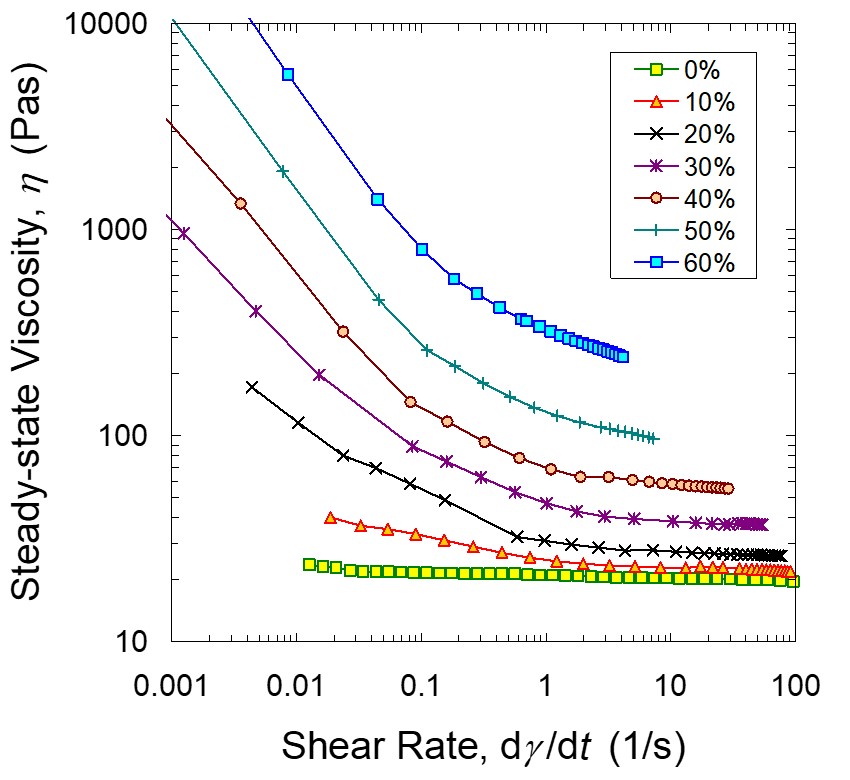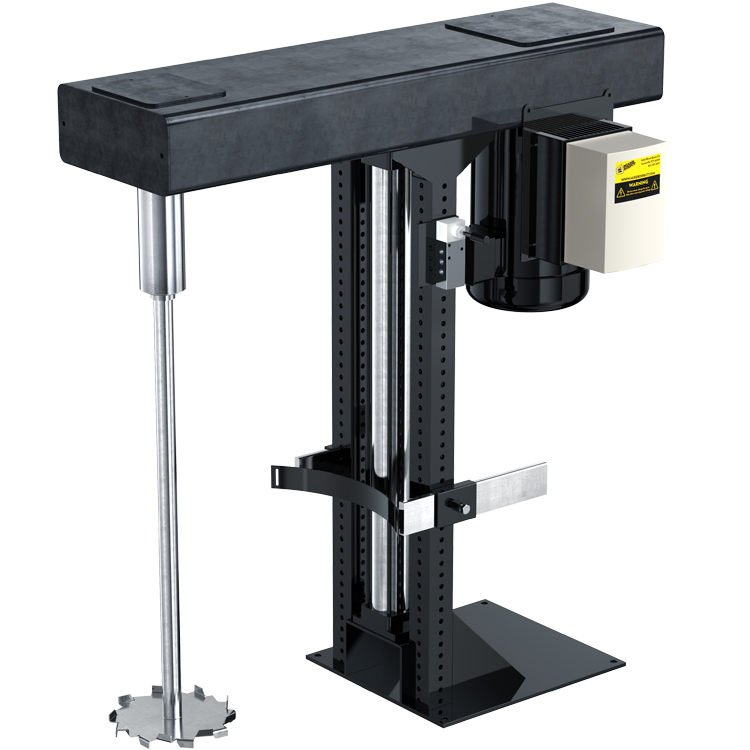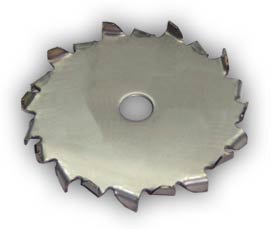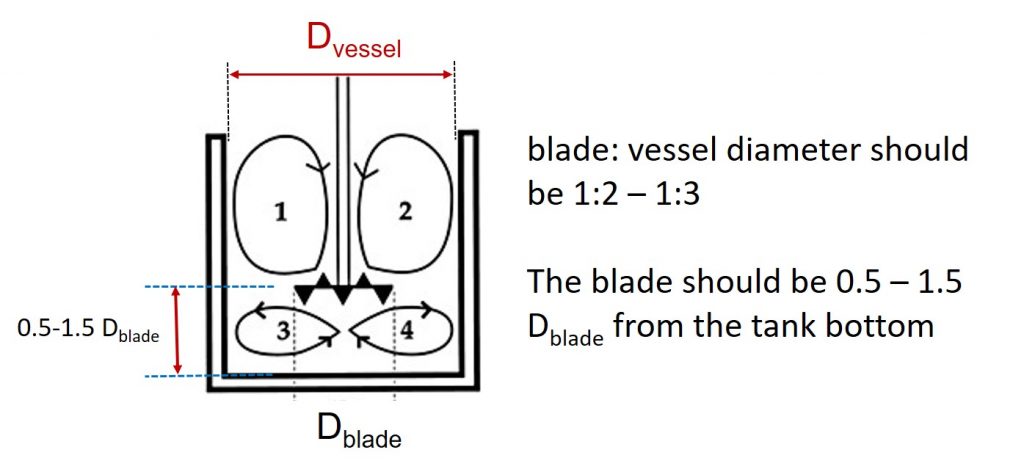The last several posts have provided details of the rheological properties of highly filled thermoset resins. Fumed silica was shown to be a very effective rheology modifier when a yield point and shear thinning are required or to control sagging, such as for die attach or coil bond adhesive. Silica fillers are used extensively to reduce the coefficient of thermal expansion (CTE) in many types of thermoset polymers used in electronics. A good example are underfills used in flip-chip packages where the CTE needs to be a low as possible to reduce the CTE mismatch between the semiconductor chip and the substrate.
This post will provide an introduction to some of the methods used to disperse fillers into thermoset resins. In order to adequately disperse many types of fillers, high shear mixing is required. There are many commercially available high shear mixers to choose from. The right mixer depends on your volume, type of fillers to disperse and the need for degassing during mixing (thus require a vacuum mixer). The main types of high shear mixers are:
- Single shaft with dispersing blade (Cowles blade)
- Multiple shaft mixer with dispersing blade and sweep blades (dual and triple shaft mixers are available)
- Double planetary mixers
- Double planetary with dispersing blades
- Three roll mills
This post will cover the simple case where high shear is required without vacuum degassing. The mixer consists of a single shaft with a Cowles dispersing blade mounted on the end. The image below is from Mixer Direct (Mixer Direct high speed disperser).
In the image above, the mixing vessel is not shown in order to visualize how the dispersing blade would be positioned. Depending on the volume to disperse, the horsepower and mixing vessel size needs to be determined. Once the formulation is close, manufacturing trials are required to “fine-tune” the filler loading and order of addition to obtain optimal rheological properties. Typically, the low viscosity resin(s) are added first and blended together. Having a low resin viscosity will aid in both dispersing and wetting of the fillers.
The following guidelines were developed for dispersing fumed silica into liquid resins. The fumed silica loading can vary from 1-2% for inks and coatings (to get good anti-sagging properties) up to 4-8% for adhesives and sealants where a good yield point and significant shear thinning are required. High shear dispersion is required to achieve optimum dispersion. The tip speed (peripheral velocity) is a critical variable in the dispersing process. The tip speed (in feet/minute or fpm) can be calculated:
fpm = RPM X 0.262 X blade diameter (inches)
Typical tip speeds are in the range of 1,800 – 6,000 fpm. Degussa recommends starting at a tip speed of at least 30 ft/sec (1800 fpm) for dispersing the AEROSIL grades of fumed silica [1]. Careful experiments need to be performed to determine the optimal tip speed to get proper dispersion and rheological properties. For most high speed dispersing applications a Cowles dispersing blade is used and is shown in the following image:
The “saw tooth” type blade provides high shear in the mixing vessel. The Cowles blades rotate in a clockwise manner and have usually have a rotation arrow stamped on the blade to ensure proper orientation of the mixing shaft. Most dispersing blades are easily removed for cleaning and optimizing the size depending on the mixing vessel size and volume.
The second critical variable is the geometry in the mixing vessel. As shown in Figure 1, the placement of the dispersing blade relative to the vessel walls and the bottom is key to get good flow and dispersion.
Figure 1. Blade diameter and location for optimal mixing (sources: Degussa [1] and MorehouseCowles [2])
The objective of the dispersing process is to establish a strong vortex that extends down to the blade while ensuring good material movement into the dispersing blades and off the bottom of the tank. If the blade is too small, the material will often cling to the vessel walls and a weak vortex will form resulting in long dispersion times. As shown in Figure 1, four mixing zones should be active. Zones 1 and 2 pull the material off the vessel walls and into the dispersing blade. Zones 3 and 4 pull the material off the bottom of the vessel and into the dispersing blades.
In Figure 1, a range of values is presented. Degussa recommends the blade: vessel diameter to be in the range of 1:2 to 1:3 (ref [1]). MorehouseCowles dispersion instructions suggest the blade:vessel diameter to be 1:3 (ref [2]). Degussa recommends that for fumed silica, the blade be 0.5-1 blade diameters from the bottom of the vessel. More generally, MorehouseCowles recommends the dispersing blade should be 1 to 1.5 diameters off the bottom of the tank.
Degussa recommends a tip speed of at least 1800 fpm and MorehouseCowles suggests tip speeds in the range of 4,000 – 6,000 fpm. The lesson here is that for each formulation, careful experiments should be performed to evaluate all of the appropriate process parameters, such as tip speed and the dispersing blade geometry and placement.
Guidelines for dispersing:
- Blade speed too slow: long dispersion times and potential for material settling
- Blade speed too fast: result in pulling air into the product, excess heat build-up and low quality dispersion
- Blade too small: material near the vessel wall will not be pulled into the disperser, poor overall product movement, and potential for filler settling
- Blade too large: result in pulling air into the product and not achieve optimal product movement into the dispersing blades.
- Blade too low in mixing vessel: decrease product movement at the top of the tank and potentially create dead spots that will not be dispersed properly.
- Blade too high in mixing vessel: flow off the bottom of the tank will be decreased potentially allowing filler settling in the bottom region and not get dispersed, poor overall material movement and potential for air entrapment
After Labor Day, I am pleased to have Dr. R. Bruce Prime back again for another detailed series of guest posts on thermoset cure kinetics.
References:
- Degussa, Successful Use of Fumed Silica in Liquid Systems
- MorehouseCowles presentation “Fundamentals of Dispersion”





Leave a Reply